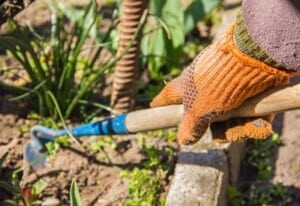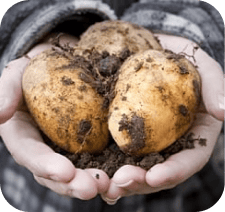Stand back! Mint (Mentha) produces quickly and can take over in ideal conditions. As a result, many home gardeners prefer growing mint in containers to keep it… well, contained. Fragrant plants are easy to propagate from seed and perfect for beginning gardeners.
One of the most popular of all herbs, mint — spearmint and peppermint — is known by its square stems, aromatic leaves and refreshing flavor. Hardy perennial plants thrive in sites with moist, well-drained soil and will often grow 3 feet in height.
Fun Fact: The US produces 70% of the world’s peppermint and spearmint supply with almost half of the mint oil production being used for flavoring chewing gum.

FREE SHIPPING!
Spearmint
Compact plants are known for their refreshing flavor and aromatic leaves.
$3.00Learn moreHeirloom herb seeds — not the sort you’ll find in box stores — have been passed down through the generations and are cherished for their outstanding characteristics, such as superior flavor, vibrant color, adaptability and hardiness. Planting instructions are included with each packet and shipping is FREE!
Quick Guide: Planting, Growing & Harvesting Mint
- All types of mint are easy to propagate and can easily take over other plantings
- Plant from seedlings (recommended) into compost-rich soil; water faithfully
- Harvest throughout the summer season — use fresh or dried
- Water in the morning to prevent rust and anthracnose
- Watch for aphids, cabbage loopers, flea beetles and spider mites
Sunlight: Full sun to partial shade
Maturity: 75-90 days from seed
Height: 12 to 30 inches
Spacing: 12 to 24 inches apart
Site Preparation
Mint grows from underground runners and thrives on abundant water. It’s not fussy about soil or light, but ample water is mandatory for success. To prepare planting sites, dig in plenty of rich organic compost (see our article on Preparing Garden Soil to learn more). Avoid using animal manures with potential weed seeds since weeding becomes difficult in an established mint patch.
How to Plant
Sow mint seeds indoors (4-6 weeks before last frost) just beneath the soil surface. Transplant outdoors after all danger of frost has passed in late spring. Can also be direct sown outdoors just before the last spring frost. Space plants 1-2 feet apart in all directions and mulch to retain moisture and keep leaves clean. Mentha is easy to propagate from cuttings (see Planting & Propagation). Older plants can be divided up every 4-5 years.
Tip: Keep mint from overtaking your herb garden by planting in a bottomless pail, or other container, and sink it into the soil at least 10 inches deep.

Harvesting and Storage
Harvest mint leaves regularly and enjoyed throughout the summer months. Leaves are best when picked early in the morning just before the dew evaporates. To dry plants, cut the stalks just above the first set of leaves, as soon as the flower buds appear. Hang upside down in bundles in a dark well-ventilated room for at least two weeks (watch How to Dry Herbs — video).
Insect & Disease Problems
Several garden pests are common on mint including aphids, cabbage loopers, flea beetles and spider mites. Apply least-toxic, natural pesticides to prevent further damage and establish control. Plants are also susceptible to fungal diseases, such as rust and anthracnose. Hand prune infected leaves and apply organic fungicides — copper or sulphur — at first sign.
Seed Saving Instructions
Seeds are ready to harvest when the blooms begin to turn brown and dry. When the heads are completely dry, gently crush them between your hands and then carefully winnow away the chaff.











